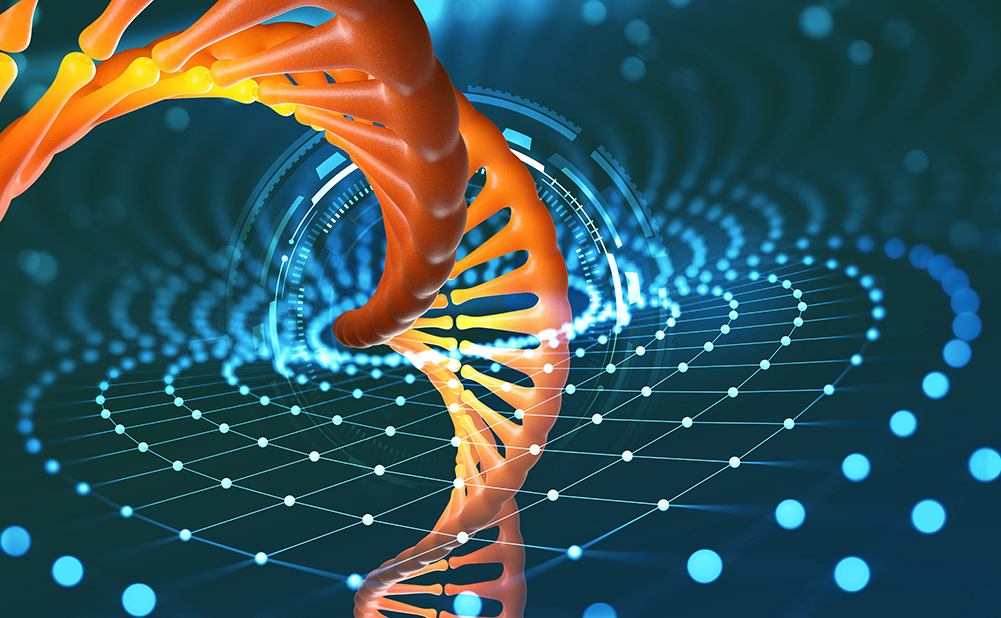Researchers repurposed CRISPR/Cas9 epigenetic editing technology in hopes of characterizing transcriptional changes and effects in different tumor settings.

The Top-Performer series highlights research literature published by Oncotarget that has generated a high Altmetric score. Altmetric scores, located at the top-left of trending Oncotarget papers, provide an at-a-glance indication of the volume and type of online attention the research has received.
Read Oncotarget’s Top 100 Altmetric papers.
—
Revelations in gene editing have made it possible to tinker in the vast human epigenome and to potentially alter the projection of diseases, including cancer. DNA methylation is an epigenetic mechanism that marks the regulation of gene expression. P53 is a highly-mutated gene in many patients with various cancerous tumors. The insulin-like growth factor binding protein 2 (IGFBP2) is an oncogene directly regulated through p53-mediated transcription. In tumorigenesis, this protein has both tumor-promoting and -suppressing functions.
“In this study, we will focus on the insulin-like growth factor binding protein 2 (IGFBP2), a recently discovered multitasked gene regulated by DNA methylation which has also been reported to function both as a tumor-promoting and -suppressing gene.”
Researchers from The Netherlands Cancer Institute in Amsterdam conducted a study using CRISPR/Cas9 technology and IGFBP2 to learn about the process of DNA methylation in various tumor settings. Their trending research paper was published in Oncotarget in 2021, and entitled, “Diverse transcriptional regulation and functional effects revealed by CRISPR/Cas9-directed epigenetic editing.”
“Here, we have taken advantage of CRISPR/dCas9 technology adapted for epigenetic editing through site-specific targeting of DNA methylation to characterize the transcriptional changes of the candidate gene and the functional effects on cell fate in different tumor settings.”
The Study
In this study, human embryonic kidney cell lines HEK293T, H3122 and MFC7 were experimented with in vitro. Researchers repurposed the CRISPR/Cas9 system to target specific DNA methylation sites. To first validate this system, they fused the Cas9 enzyme to the catalytic domain of the DNA methyltransferase 3 alpha (DNMT3ACD). DNMT3A is a gene involved in the transfer of methyl groups to CpG sites. After validating this system with results from a previous study, they selected seven single guide RNA (sgRNA) sequences that targeted IGFBP2 promoter locus on CpG sites one and two.
“DNA methylation was targeted in this specific region which represents the binding site of p53, one of the transcription factors involved in IGFBP2 gene expression.”
For the first time, the researchers demonstrated evidence that targeted methylation of DNA through CRISPR/dCas epigenetic editing is inherited by daughter cells and stable across multiple cell divisions. Their study also revealed an orientation of combinating sgRNAs that enable methylation at higher levels. Among their many other findings, the researchers showed that IGFBP2 expression can also be regulated by targeted DNA methylation.
“Using our validated system, we evaluated the transiently-performed de-novo targeted DNA methylation of IGFBP2 promoter and its stable inheritance across several rounds of mitotic cell divisions.”
Conclusion
“In conclusion, our study highlights the significance of exploring the effects of the epigenetic editing in different tumor settings by revealing the important consequences that this can have on transcriptomic regulation and tumor cell behavior.”
Click here to read the full research paper, published by Oncotarget.
YOU MAY ALSO LIKE: More Oncotarget Videos on LabTube
—
Oncotarget is a unique platform designed to house scientific studies in a journal format that is available for anyone to read—without a paywall making access more difficult. This means information that has the potential to benefit our societies from the inside out can be shared with friends, neighbors, colleagues, and other researchers, far and wide.
For media inquiries, please contact media@impactjournals.com.



